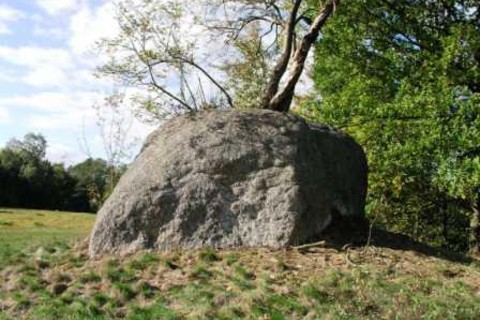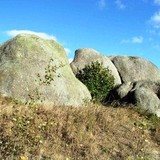Kynžvart Rock
Amid giant boulders
At several places in the meadows and forests south of Kynžvart, enormous granite boulders catch us by surprise. The boulders are isolated or occur in clusters as well, and are a reminder of the geological processes of weathering during the Quaternary Period. Following the erosion of the surrounding weathered rock during this period, the more resistant rock core surfaced and was shaped further by natural weathering processes.
The largest of these boulders is protected as the Kynžvartský Kámen Natural Monument. It is located north of Luční Pond, near an old path that connects the railway station of Lázně Kynžvart with the town itself. The rock is about 5 m high and its surface is furrowed with 5–20 cm wide and up to half a metre deep grooves called pseudo-karren (due to their similarity to karren, which form in karst areas in considerably softer limestone rocks).
The pseudo-karren and rock basins formed due to superficial weathering, i.e. natural processes of mechanical and chemical weathering caused by rainwater.









